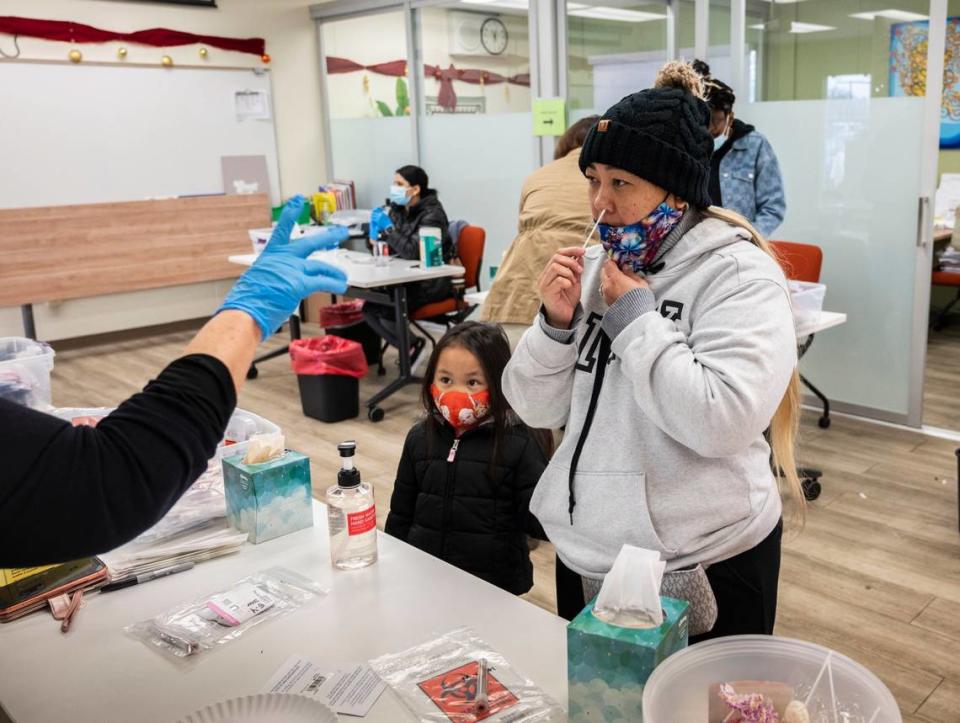Is COVID on the rise in California? These 6 counties have it the worst, new data shows
COVID-19 cases across California have risen over the past week, with a handful of counties in the northern part of the state bearing the brunt of the virus.
According to data collected by the California Department of Public Health, COVID-19 test positivity was at 9.6% as of Dec. 22.
In the past week, California reported 2,839 new hospital admissions due to the novel coronavirus, and about 2% of deaths that occurred were COVID-related, the state health department reported in the weekly update.
Overall, 1,079 COVID-related deaths were reported in California from Oct. 1 to Dec. 16.
Which California counties have the most COVID-19 cases?
As of Tuesday, data collected by the federal Centers for Disease Control and Prevention revealed that parts of California had medium levels of coronavirus-related hospital admissions.
Based on new data on COVID-19 hospital admissions per 100,000 people collected in the past week, these counties have it the worst:
Sacramento County
Yolo County
Placer County
El Dorado County
Mono County
Inyo County
These counties had 10 to 19.9 new coronavirus-related hospital admissions per 100,000 people over the past week, the CDC said.
In the past week, Sacramento, Yolo, Placer and El Dorado counties have had a total of 246 new hospital admissions due to COVID-19. Meanwhile, Mono County and Inyo County each reported five new coronavirus-related hospitalizations during the same time period.
The majority of California remains in low levels, meaning that less than 10 residents per 100,000 have been hospitalized due to COVID-19, according to the data.
High levels would indicate more than 20 residents per 100,000 have hospitalized due to COVID-19. No counties in California have reached this level.
What are some possible COVID-19 symptoms?
People with COVID-19 have reported a wide range of symptoms, according to the CDC.
Symptoms can appear two to 14 days after exposure.
Possible symptoms include:
Fever or chills
Cough
Shortness of breath or difficulty breathing
Fatigue
Muscle or body aches
Headache
New loss of taste or smell
Sore throat
Congestion or runny nose
Nausea or vomiting
Diarrhea
However, the CDC states symptoms can vary depending on a person’s vaccination status and can change with new variants.
How do I know if I have coronavirus or the flu?
Some possible symptoms that set COVID-19 apart from other contagious respiratory illnesses include the loss of taste or smell, and nausea or vomiting.
However, you cannot tell the difference between flu and COVID-19, according to the CDC.
“You cannot tell the difference between flu and COVID-19 by symptoms alone because some of the symptoms are the same,” the CDC website states.
The only definite way to know the difference is by testing.

“Some PCR tests can differentiate between flu and COVID-19 at the same time,” the CDC states.
If one of these tests is not available, you can test for flu and COVID-19 separately.
How soon should I test if for COVID?
For those displaying possible symptoms, the CDC states you should test immediately.
“If you do not have symptoms but have been exposed to COVID-19, wait at least 5 full days after your exposure before taking a test,” the CDC website states.
What do you want to know about life in Sacramento? Ask our service journalism team your top-of-mind questions in the module below or email servicejournalists@sacbee.com.

